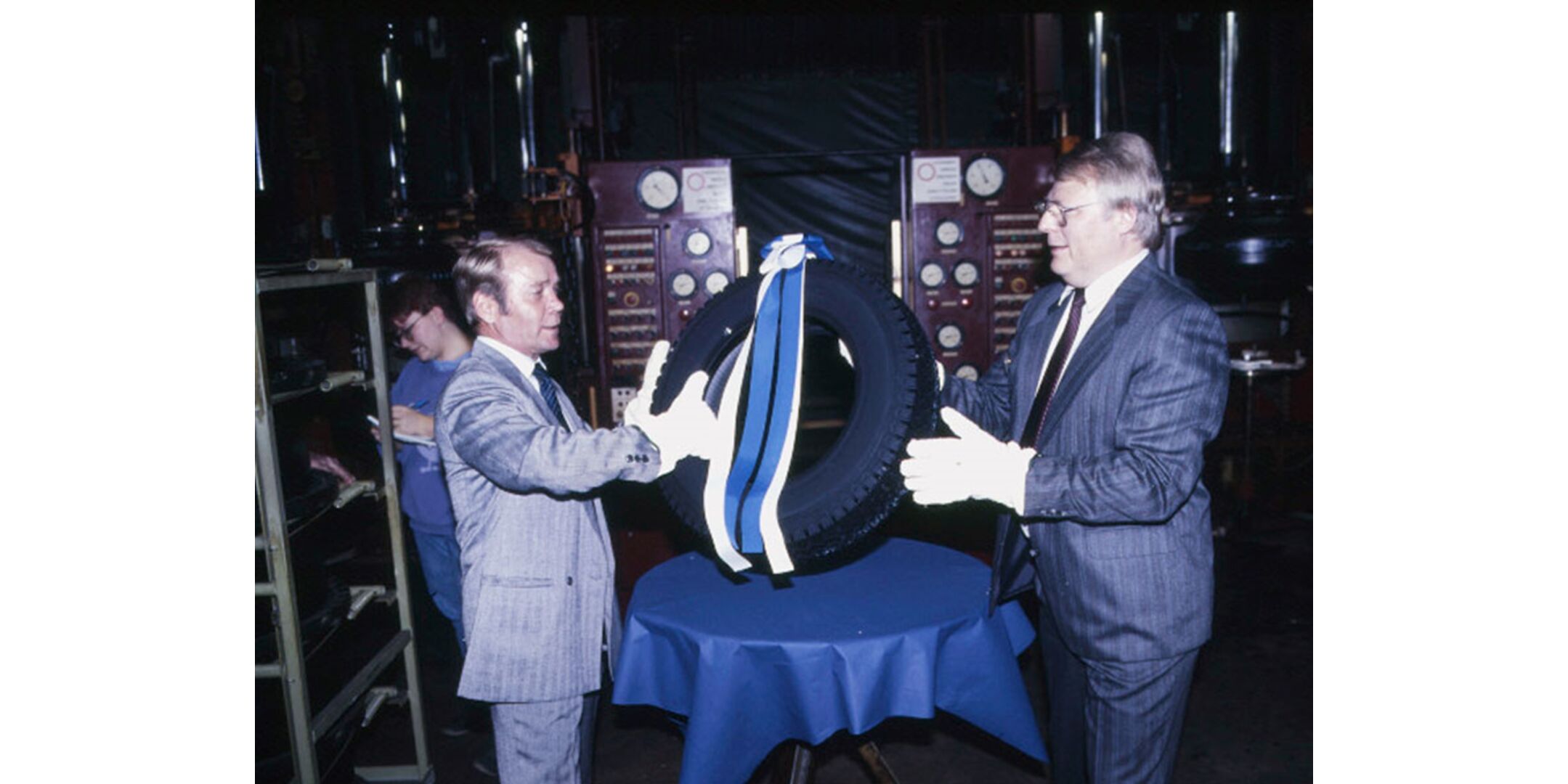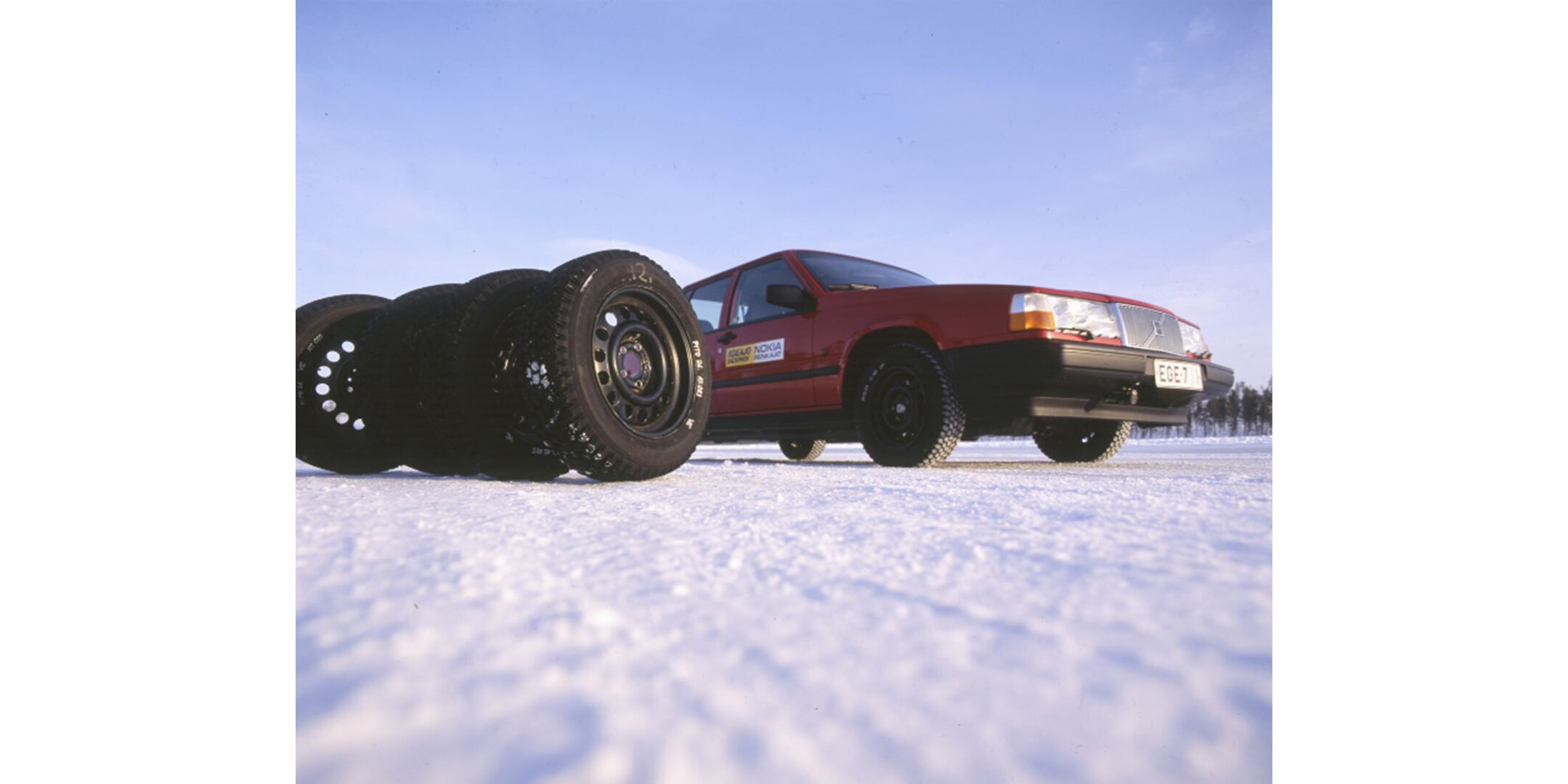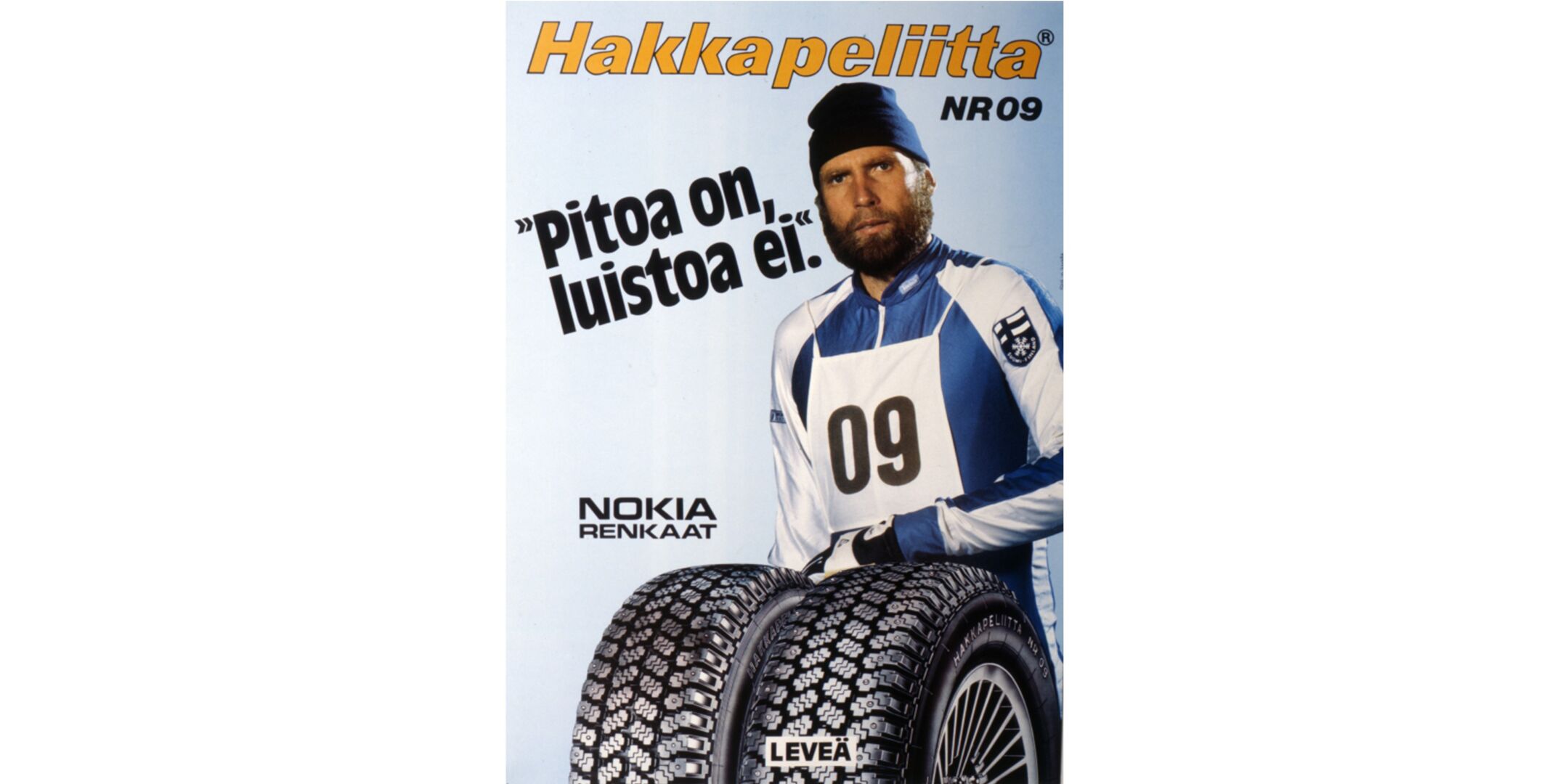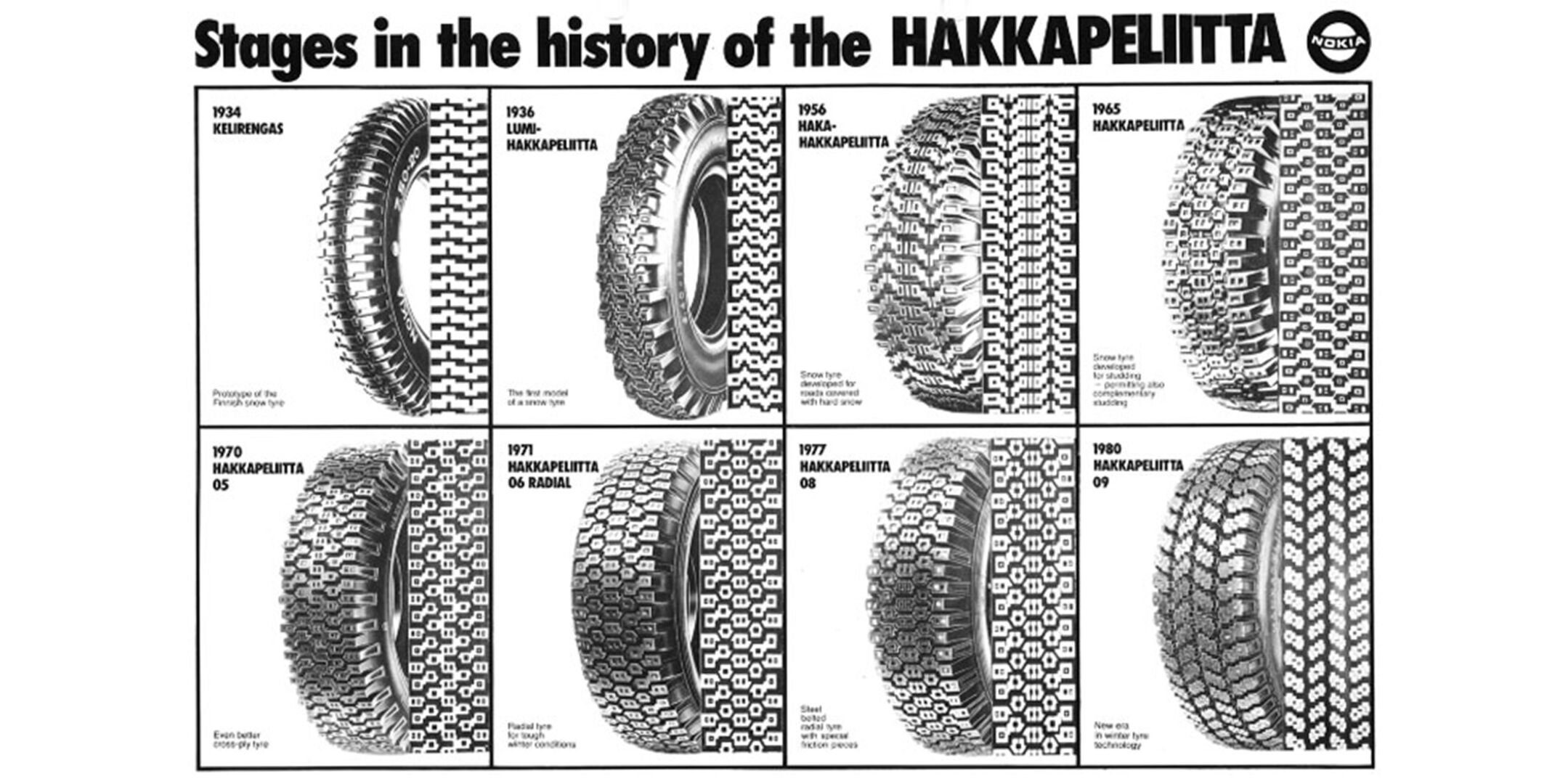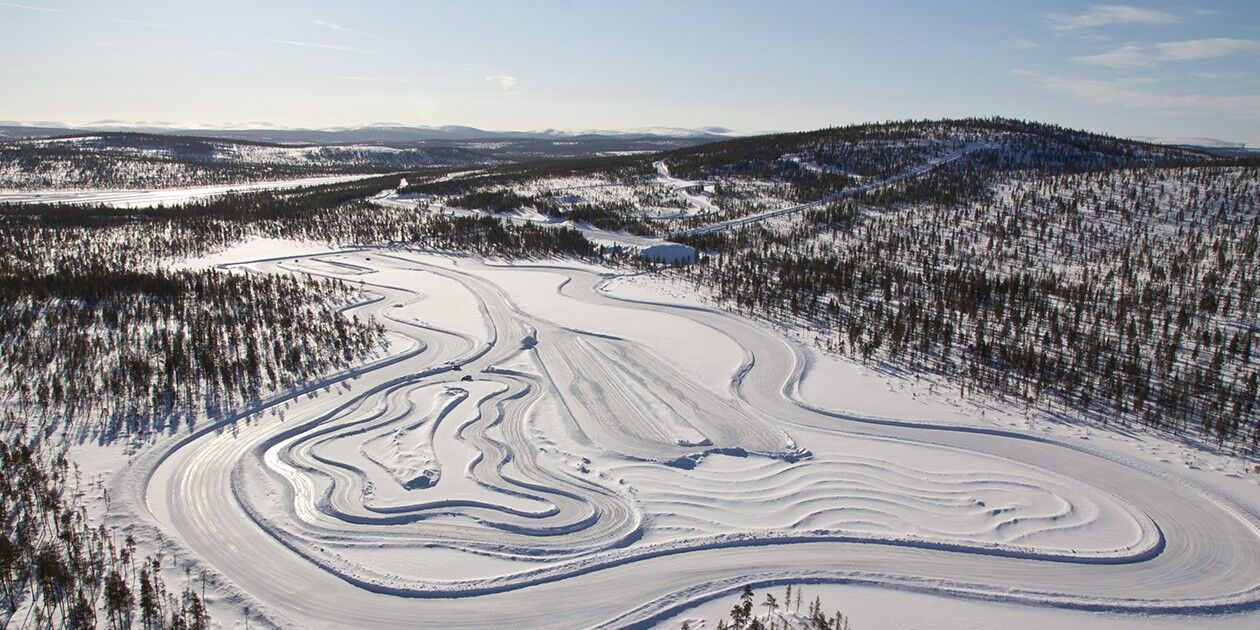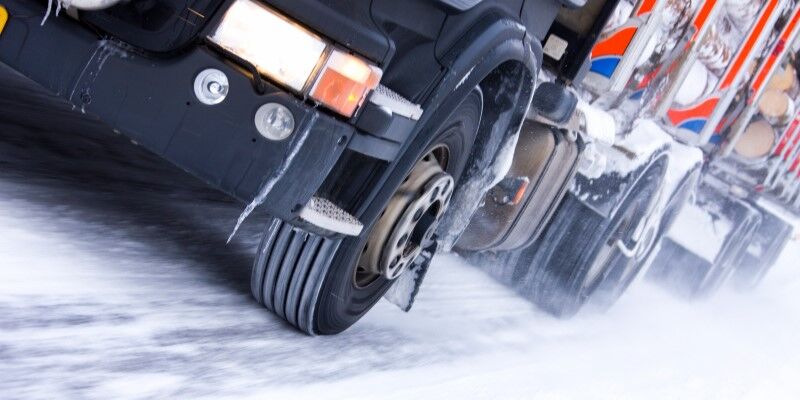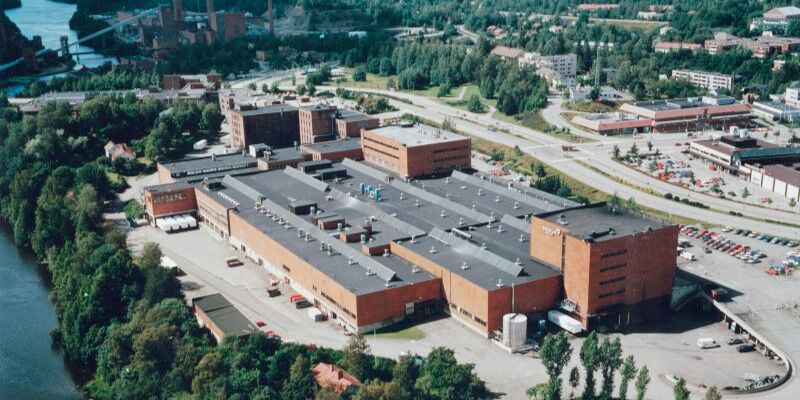Article
1980: Success in tests
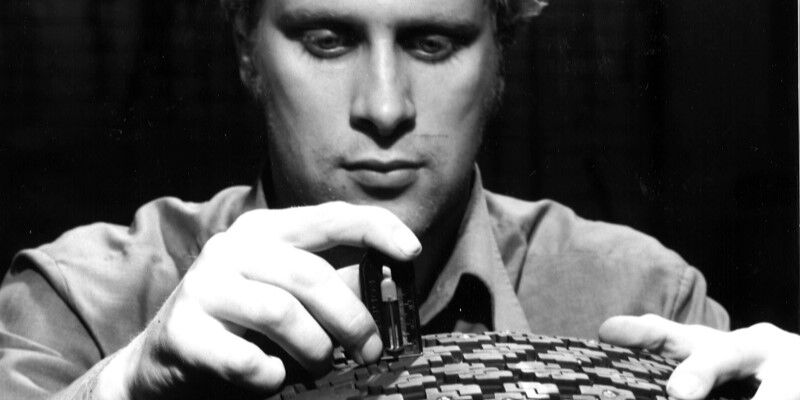
De-icing roads with salt changed driving conditions in the winter. Better wet grip and wear durability was now required from the Hakkapeliittas. Drivers valued quietness and lower fuel consumption even more than before.
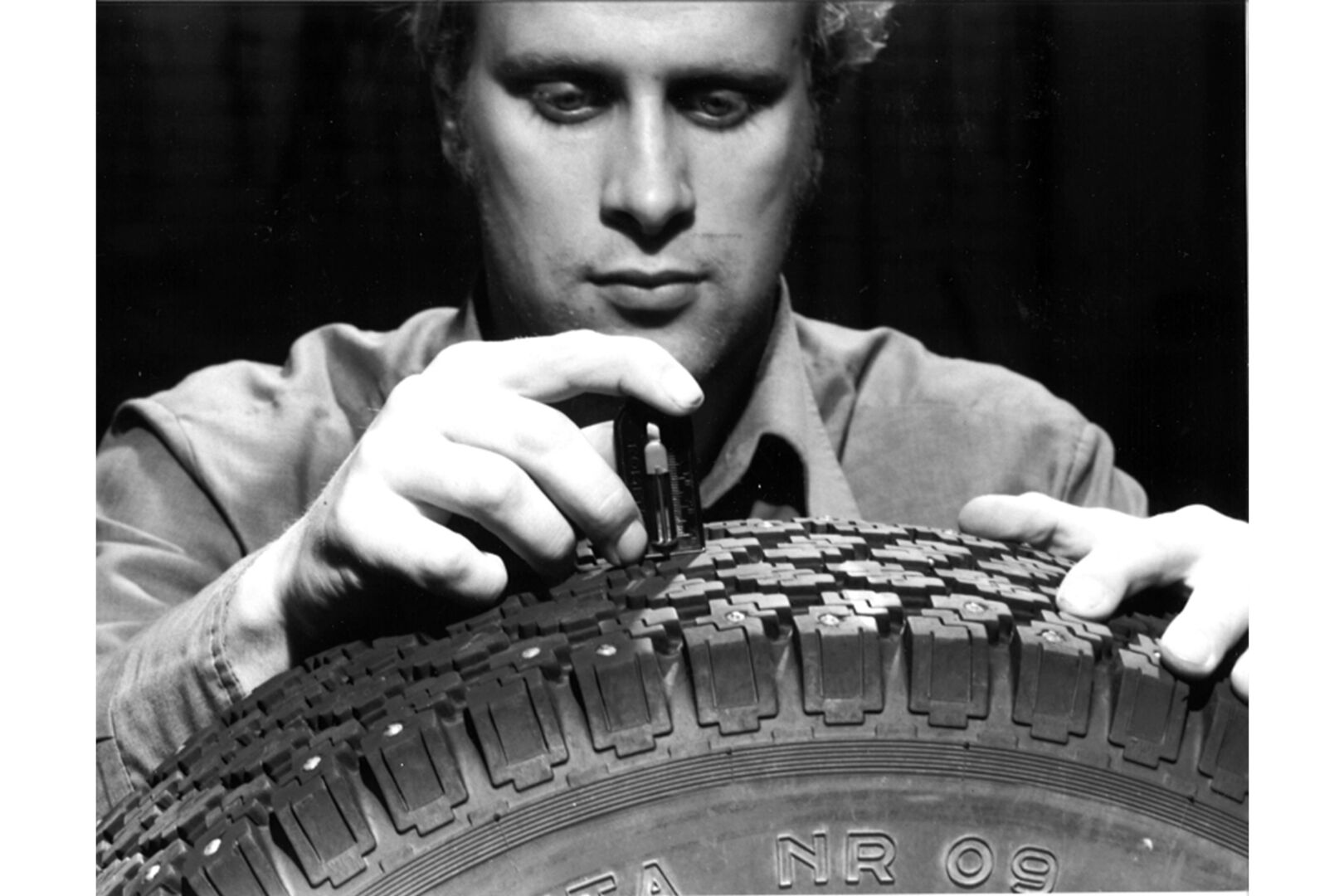
From suction cups to arrow patterns
“There are very few Finnish drivers who will not immediately recognise the Hakkapeliitta tire by its looks,” said Tekniikan Maailma in 1980. The first Hakkapeliitta in 1936 had a staggered diagonal tread pattern with many gripping edges. The model remained the same until the 1950s. The novelty for 1956, the Haka-Hakkapeliitta, widened the load-bearing tread surface and increased gripping ability, generating a stud-like piece pattern on the tread.
The development work for a new generation of winter tire started in 1978, and the Hakkapeliitta NR 09 was introduced two years later. The tire introduced a surprise, as the traditional suction cups had been replaced with a streamlined arrow pattern.
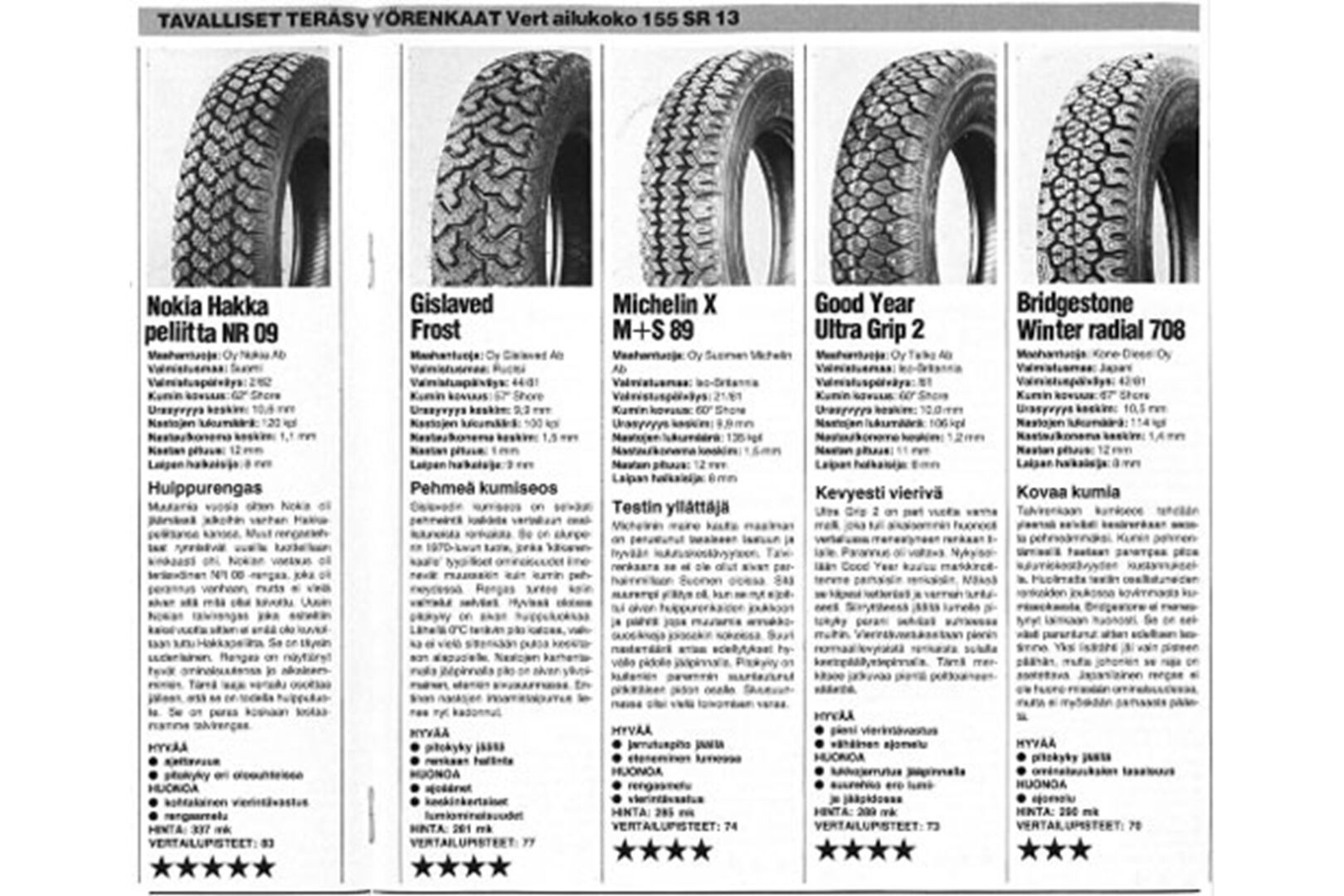
Test success
Tekniikan Maailma is the pioneer for the consumer testing of winter tires. The magazine published its first story about tires in 1958 and the tire tests started soon afterwards. The effect of studs was of particular interest. The first winter tire test was published in 1960, and Hakkapeliitta was included as a studless comparison tire.
This new product became a long-standing success story. The production of the 09 reached five million in 1987. The NR 09 also reached unanticipated success in consumer comparison tests. The tire was number one in Tekniikan Maailma’s winter tire comparison test for four consecutive years.
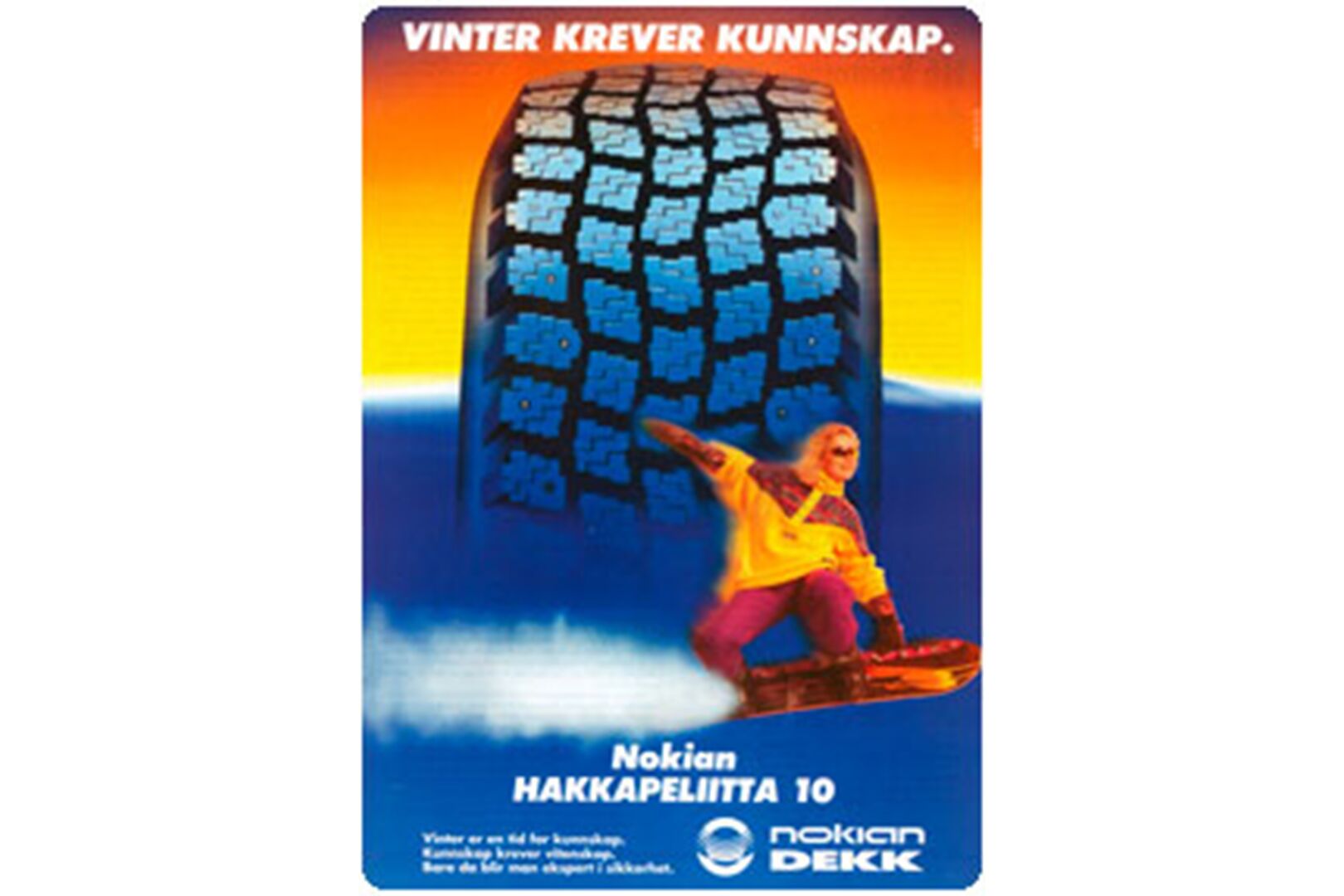
Ten out of ten
The legendary war horse, Hakkapeliitta 09, had been galloping on winter roads for nearly ten years when the factory in Nokia gave birth to a new generation of winter tire. Heavy demands were placed on the Hakkapeliitta 10 to rise to the challenge of its predecessors and continue the 50-year triumph of the Hakkapeliittas. Launching the new tire in 1989 was a tough spot for product development. After the newcomer started gaining success in terms of tests and sales figures, there was cause to celebrate. After reaching ten, the model numbering of the Hakkapeliittas started again from one.
Other new tire products during the decade included the Hakkapeliitta 10 and the M+S 111. Heavy radial tires were a special focus area: tractor and forestry equipment tires became a growing export to Canada, for example.
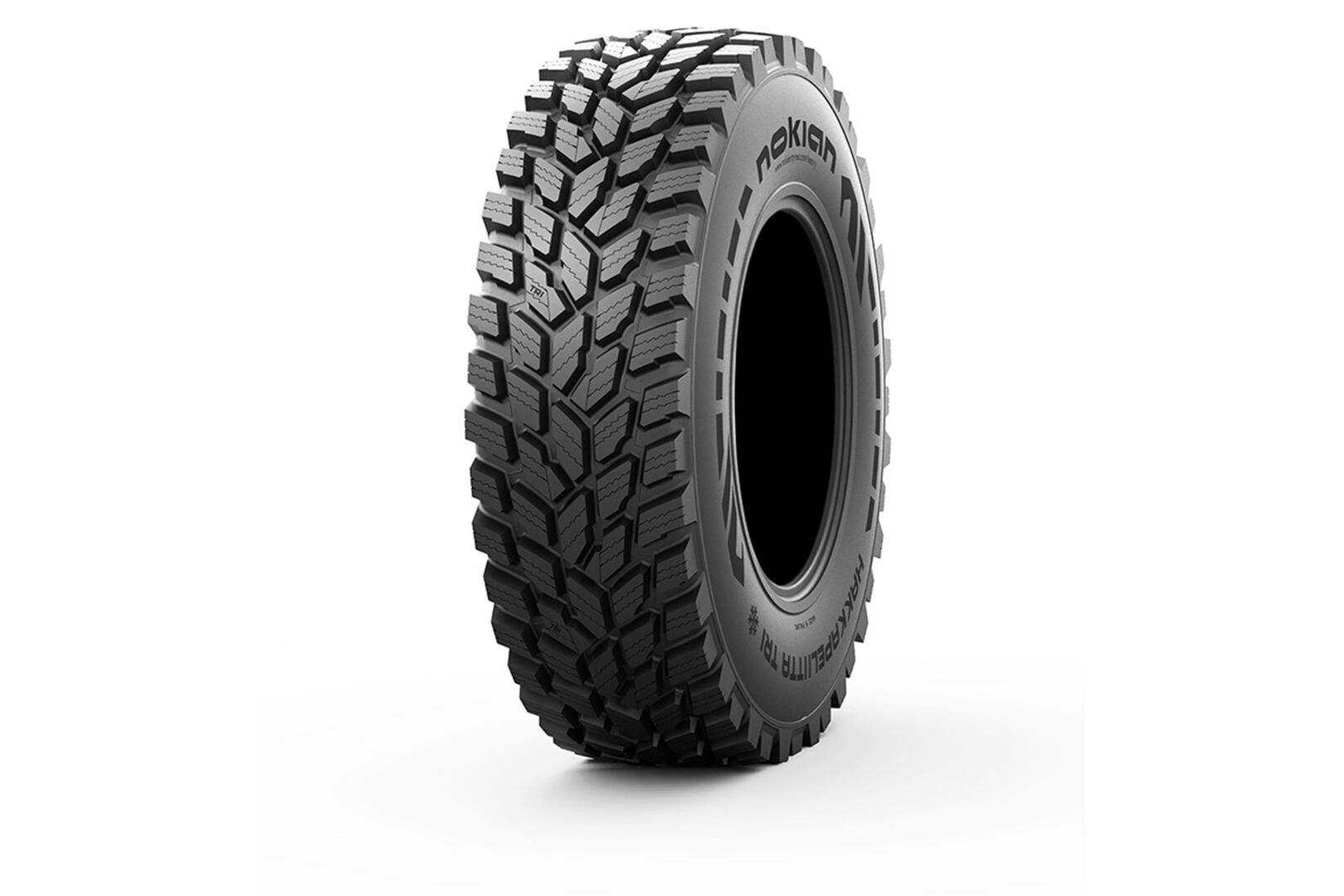
Heavy tires
The production line for heavy tires was expanded substantially in the early 1980s. After the renovation, Oy Nokia Ab’s tire factory had an area of over 7 hectares. The market for Nokian Heavy Tyres has also been growing strongly during the 21st century. The latest introduction to the heavy tire range is the Nokian Hakkapeliitta TRI, the first winter tire for tractors that was launched in 2014. It is a true winter specialist for contracting and snowploughing.
Image: The Nokian Hakkapeliitta TRI is the world’s first winter contracting tire for tractors, and it also holds the world speed record for tractors: 130.165 km/h.
In 1986, Nokia Kumiteollisuus signed a far-reaching product development cooperation agreement with SP Tyres UK Ltd, part of the Japanese Sumitomo Rubber Industries group. The company also signed large original equipment contracts for Saab passenger cars and Valmet tractors.
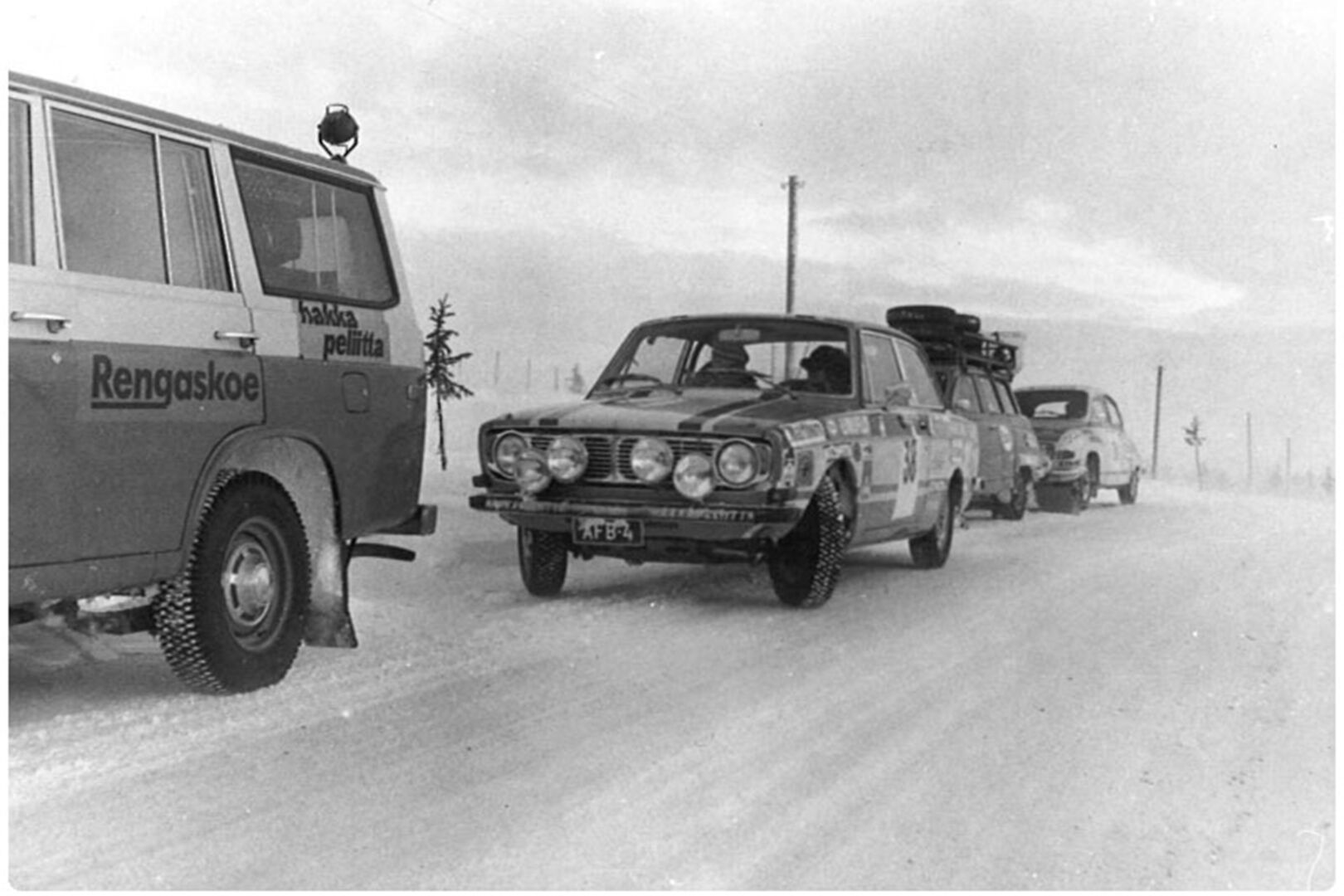
Ivalo
Testing winter tires in actual conditions is an essential condition for product development. Throughout its history, Nokian Tyres has taken advantage of the Finnish weather and demanding winter conditions. Starting from the 1930s, the Hakkapeliittas were mainly being tested around Nokia. In the 1970s, the testers and their cars started moving further north.
Computer-assisted methods were introduced for tire design and testing. Product development for the Hakkapeliittas received new coordinates in 1986, when the company established its own testing centre in Ivalo, north of the Arctic Circle.
